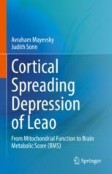Search
Search Results
-
External validation of population pharmacokinetic models of vancomycin in postoperative neurosurgical patients
ObjectiveVancomycin is commonly used in the prevention and treatment of intracranial infections in postoperative neurosurgical patients with narrow...

-
Intraventricular or intrathecal polymyxin B for treatment of post-neurosurgical intracranial infection caused by carbapenem-resistant gram-negative bacteria: a 8-year retrospective study
PurposePost-neurosurgical intracranial infection caused by carbapenem-resistant gram-negative bacteria (CRGNB) is a life-threatening complication....

-
Retrospective review of the epidemiology, microbiology, management and outcomes of intra-cranial abscesses at a neurosurgical tertiary referral centre, 2018–2020
BackgroundIntracranial abscesses are rare but serious, and are associated with significant morbidity and mortality. Due to both the rarity and...

-
A novel model of acquired hydrocephalus for evaluation of neurosurgical treatments
BackgroundMany animal models have been used to study the pathophysiology of hydrocephalus; most of these have been rodent models whose lissencephalic...

-
New Insights into the Pharmacology of Dexmedetomidine and Open Issues for Neurosurgical Procedures
Patients undergoing neurosurgical procedures or requiring mechanical ventilation at the end of the neurosurgical procedure need analgosedation to...
-
Spontaneous intracerebral haemorrhage associated with early-onset cerebral amyloid angiopathy and Alzheimer’s disease neuropathological changes five decades after cadaveric dura mater graft
Cerebral amyloid angiopathy (CAA) is a small vessel disease, causing spontaneous intracerebral hemorrhage (ICH) in the elderly. It is strongly...

-
Impact of White Matter Dissection in Microneurosurgical Procedures
White matter fiber dissection is a technical procedure used in neuroanatomy studies to gain a comprehensive three-dimensional understanding of both...
-
Revolutionizing Neurosurgery with GPT-4: A Leap Forward or Ethical Conundrum?
Neurosurgery, a highly specialized and sophisticated branch of medicine, is devoted to the surgical intervention of maladies impacting both the...

-
Clinical Monitoring of Cortical Spreading Depression (CSD) in the Human Brain
The technologies for monitoring of NADH and other parameters developed for animal study of CSD was applied to monitor patients that were exposed to...
-
Outbreak investigation of Serratia marcescens neurosurgical site infections associated with a contaminated shaving razors
BackgroundSurgical site infection (SSI) is the most common healthcare-associated infection. We report an outbreak of neurosurgical site infections...

-
State-of-the-art of situation recognition systems for intraoperative procedures
One of the key challenges for automatic assistance is the support of actors in the operating room depending on the status of the procedure....

-
An expandable chamber for safe brain retraction: new technologies in the field of transcranial endoscopic surgery
Neurosurgery is a highly specialized field: it often involves surgical manipulation of noble structures and cerebral retraction is frequently...
-
Increases in the Peak Frequency of the EEG Alpha Rhythm on Presentation of Own Names during Deep Anesthesia
The perception of emotionally significant sounds by patients with depression of consciousness remains a relevant topic. Published data indicate that...
-
RAGE Inhibitors as Alternatives to Dexamethasone for Managing Cerebral Edema Following Brain Tumor Surgery
Resection of brain tumors frequently causes injury to the surrounding brain tissue that exacerbates cerebral edema by activating an inflammatory...

-
Machine learning distinguishes neurosurgical skill levels in a virtual reality tumor resection task
This study outlines the first investigation of application of machine learning to distinguish “skilled” and “novice” psychomotor performance during a...

-
A Brief Explanation on Surgical Approaches for Treatment of Different Brain Tumors
The main goal of brain tumorBrain tumor surgerySurgery is to achieve gross total tumor resection without postoperative complicationsComplication and...
-
Study protocol of the GLOW study: maximising treatment options for recurrent glioblastoma patients by whole genome sequencing-based diagnostics—a prospective multicenter cohort study
BackgroundGlioblastoma (GBM), the most common glial primary brain tumour, is without exception lethal. Every year approximately 600 patients are...

-
Neurosurgery and Neuroinnovation in the Surgical Suite: The Ethics of Neurostimulation for Severe Obesity
Innovation has been fundamental to neurosurgical advancements. Neurostimulation as treatment for severe obesity is one such innovation that has...
-
New Directions for Surgical Ablation Treatment of Obsessive Compulsive Disorder
Although there are effective treatments available for many, probably most, patients with OCD, a significant number do not respond, or fail to...
-
Update on the Management of Brain Metastasis
Brain metastases occur in almost one-third of adult patients with solid tumor malignancies and lead to considerable patient morbidity and mortality....
